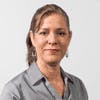Whether it's extreme temperatures, humidity, harsh cleaning agents or high degree of abrasion on cables, our five experts have guidance on what cables you should use to ensure reliability. As the Industrial Internet of Things (IIoT) continues to gain mindshare and acceptance, the roles of the cables, connectors and wires that move the data become more important.
What recommendations can you make for connectors that need to operate in extreme environments?
Jack Zurick, senior control systems engineer at Thermo Systems, a Control System Integrators Association (CSIA) member: Gold-plated connectors are often best used in corrosive environments and present a lower Ohmic resistance. Connectors as made by Amphenol, as well as a host of other manufacturers, have been used successfully where multi-pin connectors are required. Reliable connections can be made even more reliable where both the male and female counterparts are screwed together, as opposed to being simply pushed together in order to mate.
PTFE low-friction, resistant to caustic agents:
- silicone-free
- operational temperature fixed and moving: -60…200 °C.
Molded silicone tube sealed tube, resistant to ingress, spatter resistance on nut:
- jacket temperature fixed: -60...180 °C
- cable temperature fixed: -50...80 °C.
Stainless steel braid—abrasion resistant, high mechanical durability:
- jacket temperature fixed: -25...80 °C
- cable temperature fixed: -50...80 °C.
Fiberglass: high temperature jacket, nonflammable, nonfraying:
- jacket temperature fixed: -60…400 °C
- cable temperature fixed:-50…80 °C.
Silicone cable abrasion and mechanical shock resistant, thermal shock resistant:
- operational temperature fixed: -40…200 °C.
PVC coated steel armor: crush resistant, high mechanical durability.
Alex Dzatko, proposals specialist at Pepperl+Fuchs: Look for connectors that have type or ingress protection ratings/certifications. Type 4X and IP65/66 are most often used in outdoor and marine environments, as these ratings protect from splashing water, ice buildup, water jets for cleaning and corrosion. IP69K connectors are used often in food & beverage and pharmaceutical industries, and they protect against hot, high-pressure water jets. IP69K protects against this cleaning process, which these industries must use to meet their required hygienic standards.










